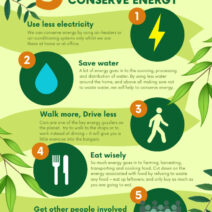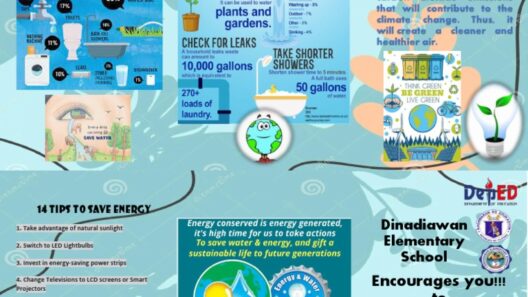In our quest for sustainability, one of the most abundant, yet underutilized, resources is radiant energy, which encompasses forms of light energy such as solar radiation. This energy presents an opportunity for more effective and eco-friendly practices in various aspects of our daily lives, ranging from housing to transportation. The capacity of radiant energy to significantly diminish reliance on nonrenewable resources compels us to explore efficient harnessing techniques. Indeed, the fascination with radiant energy lies not only in its abundance but also in its role as a catalyst for transformative practices that can curtail climate change.
The significance of light in conserving energy does not merely rest on its inherent qualities; it extends into the depths of technology, architecture, and behavioral changes. One critical observation is that many individuals tend to overlook the simple yet profound impact of natural light. How often have we resorted to artificial lighting even during peak daylight hours? The reality is that by merely adjusting our habits, such as utilizing windows and skylights, we can drastically reduce electricity consumption. Embracing natural light should be the first step toward redirecting our efforts into harnessing radiant energy efficiently.
Architectural design principles must evolve to prioritize daylight utilization. Incorporating features like larger windows or optimized building orientation can enhance the penetration of sunlight into interiors. Employing reflective surfaces, such as strategically placed mirrors or light-colored walls, can further augment the distribution of natural light throughout a space. These modifications not only improve aesthetic appeal but also contribute to substantial energy savings. Furthermore, any efforts to enhance daylighting can mitigate the heat island effect often exacerbated by building materials that absorb heat rather than reflecting it.
Besides architectural strategies, the technological realm offers a plethora of options for harnessing radiant energy. Solar panels, for instance, are a primary example of converting sunlight into usable energy. These photovoltaic cells, often seen on rooftops, should be more widely adopted across residential and commercial sectors. However, the implementation of such technology must be complemented by battery storage systems to manage energy capture efficiently. This pairing allows for a continuous supply of power even during periods of diminished sunlight, ensuring that no opportunity for harnessing light energy goes to waste.
Moreover, advances in solar technology are astounding. Innovations such as solar shingles and building-integrated photovoltaics have developed to make installations less obtrusive and aesthetically pleasing, thereby fostering their acceptance in mainstream architecture. Investing in research and development will enhance these capabilities, making radiant energy not just an alternative, but a primary source of power in the future.
On a deeper level, we must consider the optimization of existing light sources. The replacement of incandescent bulbs with LED lighting is a prime example of how a seemingly simple action can yield monumental energy savings. LED lights consume significantly less energy and last longer than their incandescent counterparts, making them a win-win solution for conserving radiant energy. Although initial costs may be higher, the long-term savings and environmental benefits, such as reduced carbon emissions, make them the superior choice.
Moreover, innovations in smart lighting systems allow for higher efficiency by adjusting lighting levels according to occupancy and daylight availability. For example, utilizing motion sensors in less-trafficked areas enables lights to turn off automatically, while dimmable technology can adjust brightness based on the natural daylight available. This intelligent design amplifies the potential of radiant energy by underscoring its adaptability to our environments.
Beyond the realm of homes and commercial buildings, transportation presents another avenue for optimizing radiant energy. The rise of solar-powered vehicles and biofuels derived from plants showcases a future where radiant energy fuels mobility. By harnessing radiant energy through innovative methods, we can significantly decrease reliance on fossil fuels and ultimately diminish greenhouse gas emissions. Continued investment in research and diverse applications of radiant energy will be crucial in transforming our transportation systems into more sustainable frameworks.
As we navigate the potential of radiant energy, it is imperative to educate and promote awareness about the behavior changes needed to facilitate a truly sustainable energy future. Society must develop a culture that prioritizes energy conservation and innovative practices. Encouraging behaviors such as taking advantage of daylight, advocating for clean energy technology, and requiring accountability from businesses and manufacturers is vital. This collective commitment goes beyond mere individual habits, establishing a transformative ethos that aims to reshape how we interact with energy as a whole.
In conclusion, conserving radiant energy requires a multifaceted approach that combines modern technology, architectural design, and cultural shifts. By embracing natural light, investing in solar technologies, and optimizing existing lighting solutions, we can harness the abundant potential radiant energy offers. Furthermore, each step taken toward achieving efficiency and sustainability serves as an antidote to climate change while simultaneously promoting a better future for generations to come. As stewards of the planet, it is our responsibility to cultivate a deeper understanding of radiant energy and the innovative avenues that light up our journey towards sustainability.








